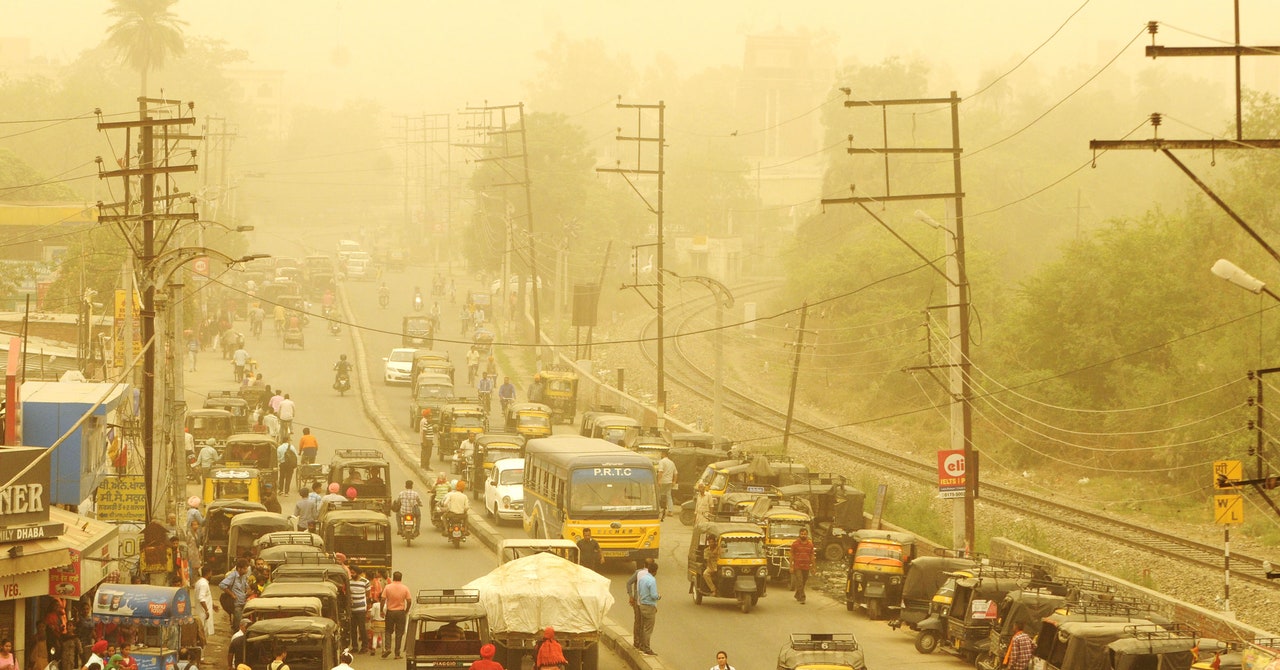
Lutyens’ Delhi is one of the most iconic neighborhoods of India’s capital. Home to the country’s parliament, numerous embassies, and a lush, 90-acre Mughal-era park, it’s an architectural paradise, connected by tree-lined streets and roundabouts with mini-gardens. Yet despite being one of the city’s most refined districts, this clean, green neighborhood is home to something sinister. It is a hot spot for a dangerous and overlooked air pollutant: ozone.
India is no stranger to pollution, with many of its cities reporting some of the worst air quality in the world. Every winter, New Delhi gets shrouded in smog for days. But discussions about air pollution and policies to mitigate it mostly focus on particulate matter: PM2.5 and PM10—small particles or droplets that are only a few microns in diameter. However, scientists are increasingly raising the alarm about surface ozone. It’s a secondary pollutant that isn’t released from any source, forming naturally when oxides of nitrogen and volatile organic compounds—such as benzene, which is found in gasoline, or methane—react under high heat and sunlight. This makes ozone a particularly ugly modern threat—a problem that arises where pollution and climate change coincide.
“Even an hour of exposure can give you very poor health outcomes,” says Avikal Somvanshi, a researcher at the Center for Science and Environment in New Delhi. While ozone is beneficial in the high atmosphere, where it absorbs ultraviolet radiation, down on Earth’s surface, concentrations of it can be deadly. Data on its impacts is patchy, but a 2022 study estimates that ozone killed more than 400,000 people worldwide in 2019, up 46 percent since 2000. And according to the State of Global Air Report 2020, it is in India where the number of ozone deaths has increased the most over the past decade.
Ozone wreaks havoc in the respiratory tract. The gas can “inflame and damage airways” and “aggravate lung diseases like asthma,” warns the US Environmental Protection Agency. It does this by affecting the cilia, the microscopic hair-like structures that line the airways to help protect them, explains Karthik Balajee, a clinician and community medicine specialist based in Karaikal, India. After exposure “we are more prone to respiratory infections,” he says, adding that inhaling ozone also affects lung capacity. Studies show that long-term exposure is associated with an increased risk of chronic obstructive pulmonary disease, a lung disease that makes it hard to breathe, and increases the risk of dying from other cardiovascular or respiratory conditions. Even short-term exposure can land you in the emergency room. “One or two days following a peak in ozone, there have been increases in hospital admissions due to respiratory problems,” says Balajee.
Delhi and other major Indian cities see spikes in ozone throughout the year, but particularly during summer heat waves, which have become increasingly common due to climate change. The World Health Organization says that exposure to ozone in the air, across an eight-hour period, shouldn’t exceed 50 parts per billion; India’s air quality standard says this WHO limit shouldn’t be broken on more than eight days a year, and not on two consecutive days. But analysis by Somvanshi and his colleagues has found that ozone has already exceeded limits in Delhi and its surrounding areas on 87 days between March and May this year. And they’ve seen similar results over the past three summers. And while the number of monitoring stations recording a breach of the ozone threshold was fewer this year than in previous years, the duration of the exceedance was higher. “We are not even close to compliance with the standard,” says Somvanshi.
Part of what’s driving this problem is ozone’s complicated relationship with other air pollutants. Ozone formation is a cyclic reaction, meaning that after it’s generated by reactions between air pollutants, ozone gets converted back to oxygen when it reacts again with pollutants in the air, such as oxides of nitrogen. But if those pollutants are not present after ozone has formed, it lingers. That’s why ozone levels shot up during India’s Covid-19 lockdown in the summer of 2020, when traffic screeched to a halt—the air pollutants needed to convert it back to oxygen weren’t being produced. It’s also why ozone is often found in green neighborhoods like Lutyens’ Delhi—because their air is cleaner, reactions that get rid of the ozone don’t take place.

